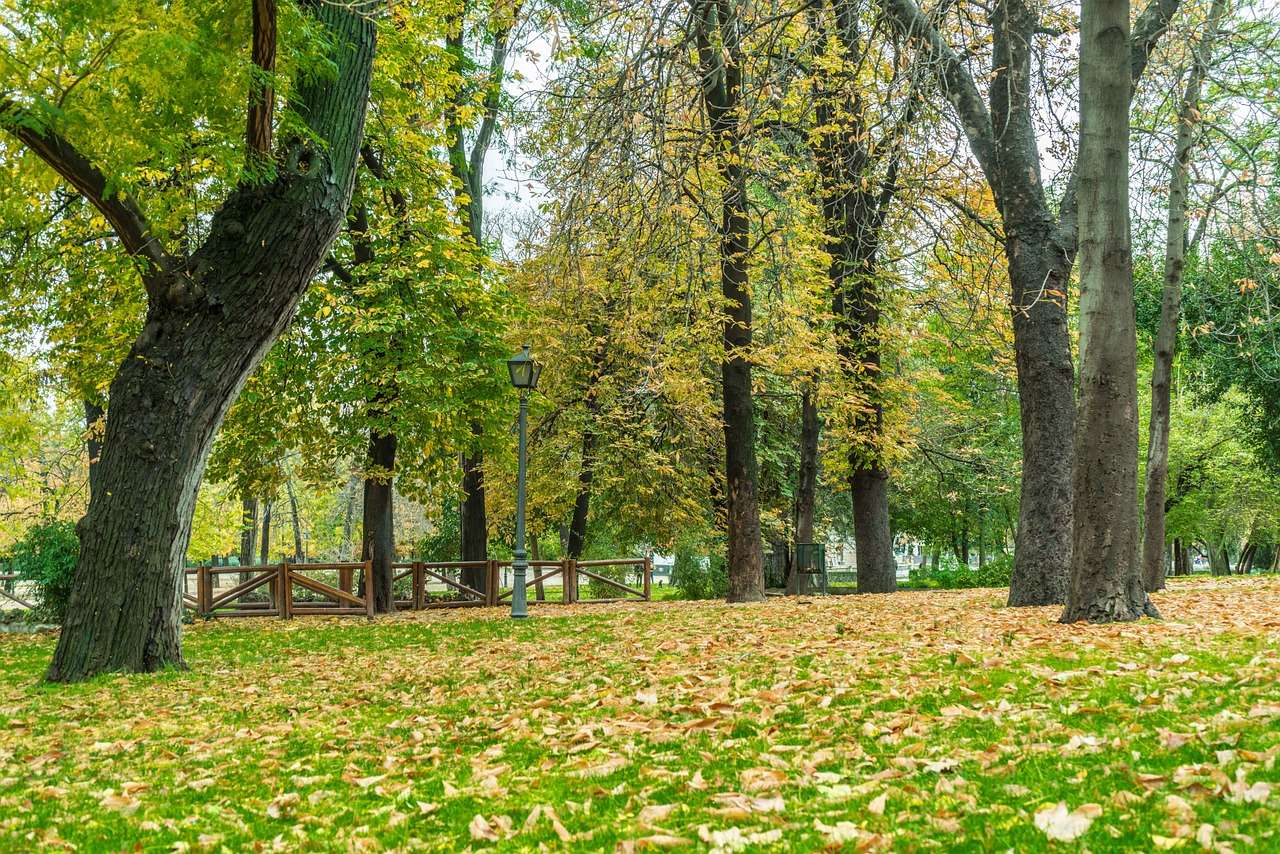
Mulching vs. Bagging Leaves: What’s Best for Commercial Landscapes?
Remember your lawn? It’s still down there somewhere under that sea of crinkly brown fallen leaves.
It’s time for the leaves to go, but what’s the best method for a commercial property?
Is it better to bag or mulch leaves?
Mulching is best when possible. But if your property has too many leaves to effectively mulch, removing them from your property is best.
James Kole, branch manager at Level Green Landscaping, fills us in on the details.
Keep reading to learn more about mulching vs bagging leaves, including:
- Mulching Leaves on Commercial Propertie
- Mulch or Bag Leaves? When Removal Is Best
- What If You Just Leave the Leaves?
- Why Do I STILL Have Leaves?
Mulching Leaves on Commercial Properties
Here at Level Green Landscaping, crews mulch leaves whenever possible, Kole says, using a mulching mower that breaks the leaves down into nutritious bits beneficial to your turf.
Is mulching leaves good for grass?
Absolutely.

Mulching is great for your lawn in several ways, Kole says:
- The tiny bits of leaves fall down to the soil level where they’ll begin decomposing, acting as a natural fertilizer. As the leaves break down, they enrich the soil with organic matter and nutrients like carbon, nitrogen and phosphorus — all good stuff your lawn loves.
- A thin layer of leaf mulch also provides insulation, protecting the grass roots from harsh winter conditions.
- A layer of shredded leaves acts as a natural mulch, suppressing weed seeds and preventing them from germinating.
- Those decomposing leaves create the perfect habitat for beneficial organisms like earthworms and microorganisms, which work to further break down organic matter and enrich the soil. Better soil, better lawn.
When leaves collect in perennial beds, Level Green crews blow them out of the beds and onto the lawn, so they can mulch those, too.
Worried about the mess?
“You won’t even notice them,” Kole says. “The tiny pieces work their way down in between the blades of grass and pretty much disappear.”
Mulch or Bag Leaves? When Removal Is Best
If you have a small property, but lots of trees, you may have too many leaves to mulch, Kole says.
When considering the pros and cons of mulching leaves, the only big con is if there are too many.
If the layer of mulched leaves is too thick, it’s no longer beneficial to your lawn, and can actually cause problems:
- A thick, dense mat of leaf mulch can suffocate your lawn by blocking sunlight and air from reaching the grass.
- Too many wet, matted leaves creates a damp environment that can be a breeding ground for fungal diseases on your lawn.
If you have too many leaves to mulch, Level Green crews don’t bag the leaves, but remove them with a leaf vacuum, which shreds them and loads them onto a truck.
The leaves are trucked to a composting facility to turn into compost. Level Green buys the compost back and uses it to enrich planting beds.

What If You Just Leave the Leaves?
If you only have a few leaves, it’s no big deal to leave them alone, Kole says. No mulching, no removal.
But most properties have too many. Removing leaves vs. mulching leaves? We’ll let you know which makes sense for your property.
Why can’t you just let a lot of leaves remain on your property’s lawn? Lots of reasons:
- Neglected leaves will smother the grass, depriving your lawn of crucial sunlight it needs for a strong root system.
- When leaves pile up, they get wet and moldy, making your lawn susceptible to diseases.
- Leaves attract rodents and bugs who would love to settle in for the winter.
- “If you have drains on your property, leaves can clog the drains,” Kole says. “That causes puddling, and those puddles can freeze. That causes a much more expensive hazard than paying for leaf removal.”
Bottom line: a property full of ratty old leaves just looks bad, Kole says. “You run the risk of turning away tenants who might think you neglect the property.”

Why Do I STILL Have Leaves?
So, you pay to get rid of your leaves, whether it’s mulching leaves on your commercial property or having them removed. Why is your lawn still covered with leaves?
Blame nature.
“It's fall,” Kole says. “If we do leaf removal on a Monday, and it's windy, the leaves will be back on Tuesday. Or even if it’s not windy.”
Most Level Green customers get two leaf removals, Kole says, one in November and one in December.
If your property includes a lot of oak trees, you might want to consider a third leaf removal in January, he says: “Oak trees hold their leaves well into winter.”
Some property managers opt for even more frequent leaf removal to ensure their property is always clear of leaves. Your Level Green account manager will help you decide the leaf removal plan that works best for you.

Get Rid of Those Leaves with Level Green
Mulching leaves on commercial properties is typically the best plan. But if you have so many leaves they need to be removed, we can help with that, too.
Let the experts at Level Green help you decide the best method for your commercial property.
Either way, we’ll take care of them, with commercial landscaping services in DC that leave your lawn ready to head safely into winter and emerge green and healthy in the spring.
If you’re not already a Level Green Landscaping client, we’d love to add you to our growing list of happy customers. Our focus is on commercial properties like offices, mixed-use sites, HOAs, municipalities and institutions in Maryland, Washington DC and parts of Virginia.
Contact us at 202-544-0968. You can also request a free consultation online to meet with us one-on-one.
We’d love to hear from you.

Douglass Delano
Doug Delano (and Bill Hardy) opened Level Green Landscaping LLC in 2002 to offer Washington DC, Maryland and Virginia reliable commercial landscape maintenance services.

